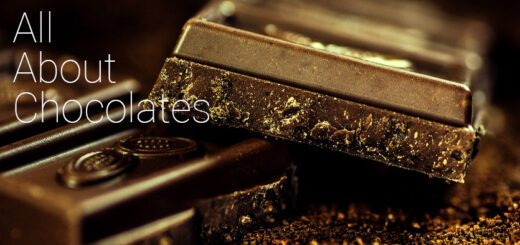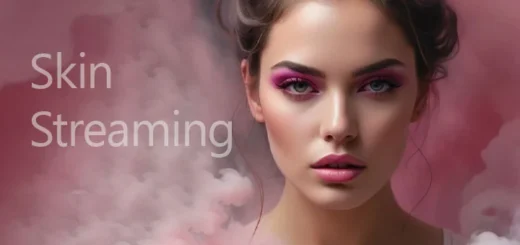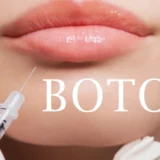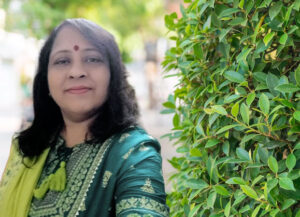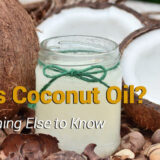Ayurvedic Massage: From Head to Toe Wellness
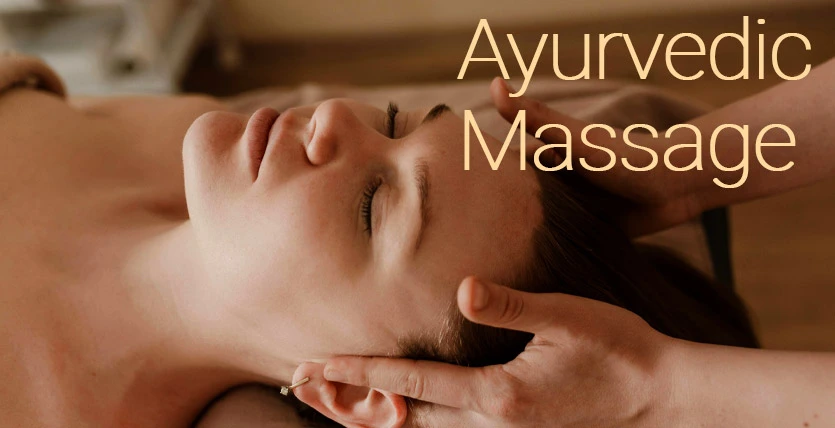
Ayurvedic Massage is an ancient holistic healing system that originated in India that underscores equilibrium and concordance between the mind, body, and spirit. Detoxifying warm oils plays a vital role in this traditional healthcare system. Today this practice has acquired prevalence worldwide for its personalized treatments based on individual constitutions and imbalances and for stimulating critical energy points (marma points) and enhancing the flow of prana (life force).
In this article, we will dive into the history, principles, benefits, different types of oils, popular therapies, self-practice massages, and more.
What is Ayurvedic Massage?
Ayurvedic Massage is also known as Abhyanga. It is a broad term that implies any sort of Ayurvedic massage using a specific sequence of strokes and warm, herbal oils eminent for pain relief and healing. This ancient healing practice originated over 5,000 years ago and has different types of massages including full-body, head, foot, etc. intertwined with the principles of balancing the body’s doshas (Vata, Pitta, and Kapha).
Abhyanga is suggested daily, particularly for the elders, those encountering stress, sleeping disorders, suffering from various ailments like rheumatism, sciatica, arthritis, etc, or those with more air in their constitution (vata dosha).
Principles of Ayurvedic Massage
Ayurvedic principles state that every individual has a special blend of Doshas. Irregular characteristics in these Doshas can prompt physical and profound medical problems. Ayurvedic massage utilizes explicit procedures and oils to balance the Doshas, boosting overall well-being. As per the early texts of Ayurveda the five components or elements of the universe, Vayu (Air), Jala (Water), Aakash (Space or ether), Prithvi (Earth), and Teja (Fire) are believed to be linked with the composition of the three essential humors (Dosa) of the human body.
Types of Ayurvedic Massage Techniques
This traditional Indian massage is designed to boost overall wellness and balance in the body and mind. Here are portrayals of some noticeable Ayurvedic techniques –
1-Abhyanga (Full-body Massage)
Abhyanga is a traditional Ayurvedic full-body massage utilizing warm herbal oils. The specialist utilizes delicate, cadenced strokes to apply the oil all around the body, focusing on vital energy points. Abhyanga helps balance the doshas, enhances relaxation, and further promotes overall vitality and sleep quality.
2- Shirodhara (Oil Pouring on the Temple)
This treatment is effective for soothing the mind, relieving stress, and enhancing mental clarity. A steady flow of warm herbal oil, buttermilk, or specific herbal decoctions on the forehead (the third eye area) makes Shirodhara a very relaxing Ayurvedic therapy.
3- Pinda Sweda (Home grown Bolus Back rub)
Pinda Sweda is conducted with warm herbal boluses (bundles) loaded up with cooked therapeutic spices, rice, or sand. The boluses are plunged in warm oil and afterward used to massage the body. Herbal Bolus Massage relieves muscle stiffness, is beneficial for inflammation, and joint pain, detoxifying tissues, and body rejuvenation.
4- Marma Point Massage
Similar to acupuncture points in Traditional Chinese Medicine Marma Point Massage focuses on the vital energy points of the body. With gentle pressure or circular movements using the fingers, thumbs, or unique instruments gentle pressure is applied to specific marma points. This helps balance energy, relieve tension, and improve circulation.
5- Udvartana (Herbal Powder Massage)
Instead of oils, this therapeutic massage is done with herbal powders or pastes. Massage is done with vertical strokes using this herbal mixture. Udvartana is particularly helpful for detoxification, weight loss, diminishing the overabundance of Kapha, and enhancing skin texture.
6- Garshana (Dry Brushing Massage)
Garshana is performed, utilizing crude silk or wool gloves or delicate fiber brushes. The therapist gently brushes the skin in precise movement to exfoliate dead skin cells. Udvartana is particularly helpful for detoxification, diminishing the overabundance of Kapha.
7- Pizhichil (Oil Bath Therapy)
In this luxurious Ayurvedic therapy lukewarm medicated oil is constantly poured over the body while massaging with rhythmic strokes. This treatment profoundly revives and balances Vata dosha, nurturing the skin, improving muscle tone, and encouraging relaxation.
8- Kati Basti and Greeva Basti (Localized Oil Pools)
Kati Basti includes making a pool of warm herbal oil over the lower back (kati) region, while Greeva Basti centers around the neck (greeva). The oil is held inside the ring set around the designated region. These treatments are brilliant for tension in the back or neck region., stiffness, and pain.
9- Netra Tarpana (Eye Rejuvenation)
Netra Tarpana is an Ayurvedic treatment specifically for the eyes. Eye Rejuvenation promotes eye health. It includes making a repository of sedated ghee/refined butter around the eyes utilizing a dough dam. The eyes are then washed in the ghee, which assists with easing strain, dryness, and clarity of vision.
10-Padabhyanga (Foot Massage)
Warm natural oils and specific pressure techniques are used to loosen up tired feet. The conventional foot rub massage balance doshas related to the lower body.
Benefits of Ayurvedic massage
Massage plays an essential part in Ayurveda. This ancient holistic healing system originating in India is considered not only a therapeutic technique but an important method of balancing energies inside the body,
nurturing overall health, and supporting both physical and mental prosperity. The significance of massage in Ayurveda can be understood through a few vital principles advantages and benefits.
1. Balancing Doshas
As per Ayurveda, the human body includes three crucial energies or doshas — Vata (air and space), Pitta (fire and water), and Kapha (earth and water). Uneven characters in these doshas lead to illness. Ayurvedic massage procedures are intended to reestablish harmony with these energies by utilizing explicit oils and strokes customized to a person’s dosha constitution.
2. Enhancing Circulation and Removing Toxins
Ayurvedic massage, often performed with warm herbal oils, facilitates works with the circulation of blood, lymph, and essential energy (prana) all through the body. This helps in eliminating toxins (ama) from tissues, promoting detoxification and repair.
3. Supporting the Nervous System
Ayurvedic massage calms the nervous system by calming the brain and relaxing the body. Delicate strokes assist with gentle strokes and help relieve stress, anxiety, and emotional balance.
4. Strengthening Musculoskeletal Health
Regular massage helps maintain the flexibility, strength, and integrity of muscles, joints, and connective tissues. It can support easing stiffness, and pain thereby improving mobility and overall musculoskeletal fitness.
5. Improving Skin Health
The utilization of natural oils and explicit massage methods in Ayurveda nourishes and revives the skin. Massaging the skin invigorates blood flow, improves complexion, promotes a healthy glow, and cures various skin conditions.
6. Promoting Sound Sleep
Ayurvedic massage is known to induce profound relaxation, which can assist with easing sleep deprivation and promote peaceful sleep. By soothing the nervous system and diminishing stress hormones it contributes to overall sleep quality and restoration.
7. Supporting Digestion and Elimination
Abdominal massage, such as Udwarthanam (herbal powder massage) or Pinda Sweda (herbal bolus massage), helps in enhancing digestion This can assist with reducing stomach-related problems and improve nutrient absorption.
10 Types of Oils for Ayurvedic Massage
The selection of massage oil is based on an individual’s Prakriti, the regular body constitution. The oils have explicit properties that can adjust the doshas. Some popular oils are
1- Almond Oil
Almond oil has a sweet smell and is less dense than mustard or coconut oil. It suits all skin types, promotes hair growth, leaves the body smelling good and hydrated, restores shine, and is unassailable to utilize for the body and the scalp.
Who should use almond oil?
Individuals with Vata and Pitta doshas should use this oil. It can treat skin conditions like dermatitis, and eczema, and revitalize and enhance immunity and brain functions. Almond oil shields the skin from sun damage and air pollution and works as a sun tan remover if used regularly.
2- Coconut Oil
Coconut oil is a rich source of Vitamin E and is utilized for skin and hair benefits. If used as a massage oil it nourishes and moisturizes the skin, delaying aging, and scars and treating dry, flaky skin
Why should you use coconut oil?
Who should use coconut oil?
This oil improves vata-related doshas and Balances excess heat in the body. Coconut oil balances Vata doshas.
3- Castor Oil
Castor oil provides various therapeutic benefits. It is a powerful Ayurvedic massage oil for body pain and is broadly utilized in treating joint arthritis and other bone conditions that cause pain. Castor oil is denser and isn’t readily absorbed. It takes a lot of time before the oil vanishes into the skin. It treats dry and sunburnt skin and can assist with healing minor injuries.
Who should use castor oil?
This oil Balances Vata dosha relieves stomach-related issues like constipation and detoxifies the body.
4- Sesame Oil
Old Ayurveda texts portray sesame oil as one of the most powerful herbal massage oils. This oil is the base oil for different Ayurvedic skin therapies.
Besides reversing the skin damage caused by free radicals and UV exposure it can assist with relieving pain and restoring mobility in joints and muscles.
Who should use sesame oil?
Quite beneficial for Vata dosha imbalances. It sustains the skin and soothes the nervous system.
5- Olive Oil
Olive oil can work wonders when utilized as massage oil. This oil is known for its medical advantages. Its anti-inflammatory properties relieve joint pain, treat dry skin, help moisturize the skin, safeguard against hurtful UV beams, improve immunity, and might lower blood sugar levels
Who should use olive oil?
Olive oil is a cooling oil and aids in balancing Pitta dosha. It is great for skin and hair. Its healing properties help control dryness and improve the appearance of the skin.
6- Neem Oil
Neem oil has extraordinary antibacterial and antifungal properties, making it one of the top picks for Ayurvedic massage. It mainly targets skin conditions like skin inflammation, warts, fungal infections, and moles psoriasis, eczema and facilitates detoxification.
Who should use neem oil?
Adjusts Kapha and Pitta doshas. It’s a rich source of Vitamin E. Even though applying neem oil to the impacted regions is recommended, it can be diluted with a carrier oil.
7- Bhringraj Oil
Bhring, markav, angarak, keshraaj, bhringaar, and keshranjan are the different names of Bhringraj. The useful effects of Bhringaraj include hair vitalizer, treating eye problems, skin disease, and anemia, enhancing stomach fire, improvement of eyesight, and headache, and relief from worm, skin, and tooth infestation.
Who should use Bhringraj Oil?
Balances Vata and destroys Kapha doshas. By improving the blood circulation on the scalp this ayurvedic benefitting hair tonic prevents balding, premature greying, thinning, hair loss, grey hair, and dandruff.
8- Shadbindu Oil
Shadbindu Oil is used for nasal installation. Assists with diminishing severe pain in the head and sensation of aversion to light. Diminishes the swelling of the mucous membrane in the nose. Stops falling of hair. Strengthens the hair roots. Treats alopecia and hair thinning. Good for cervical spondylosis, and shoulder and neck stiffness. It keeps up with great skin and eliminates wrinkles.
Who should use Shadbindu Oil?
It is a medicinal oil utilized to balance Kapha in the head treat sinusitis and improve eyesight. For hair, it’s ideal to utilize the oil either in the first part of the prior bathing or around evening time before going to bed. After a thorough massage, this oil reaches the roots of the hair and benefits hair-related issues.
9- Mustard Oil
Mustard oil is a natural painkiller. This oil assists in joint inflammation. The antibacterial and antifungal properties of this oil help treat a range of skin disorders like allergic reactions, rashes, and itching. It benefits Hair growth of dull, dry, and thinning hair. Controls hair fall. The skin texture skin is enhanced by ayurvedic massage utilizing mustard oil.
Who should use Mustard Oil?
Mustard oil is utilized to decrease Kapha and Vata. The two essential nutrients Omega-3 unsaturated fats and protein embellish the skin and hair.
10- Mahanarayan Oil
This versatile and widely used oil reduces pain and inflammation. It soothes sore muscles and joints, arthritis, back pain, and sciatica. Mahanarayan Oil delivers a broad range of health benefits.
Who should use Mahanarayan Oil?
Mahanarayan oil is a strong mix of 55 distinct spices and oils, ashwagandha, gokshura, bala, and camphor. This oil is considered a valuable tool in Ayurvedic medicine and is tridoshic, meaning that it balances all three doshas – vata, pitta, and kapha.
These oils can be used directly or can be blended according to the body type (Prakriti). An Ayurvedic proficient decides the most suitable oil and massage for maximum health benefits.
Procedure for Self-Abhyanga (Self-Massage)
Steps to perform Self-Massage
1- Before starting self-massage, prepare the skin’s pores for acquiring the oil by dry brushing the dead skin and dirt.
2- After dry brushing choose the dosha-specific Ayurveda oil and warm it.
3- You can either rub the oil between your palms or warm it in a pot. The temperature of the oil should be soothing to your skin.
4- Delicately massage your body starting with the neck, moving down to your feet.
5- Utilize short strokes for joints and long strokes for limbs.
6- Do not forget to massage fingers and toes, and give additional care to the soles of your feet, as they contain all the sensitive spots.
7- Allow the oil to enter the most profound layers of the skin. The absorption of the oil and herbs will take 5-10 minutes.
8- Take a cold or warm shower (as per the weather).
9- Rinsing excess oil is an important step because an abundance of oil will obstruct the pores.
10- Practice self-massage at least 2 to 3 times a week.
Frequently asked questions
Which time is best for Abhyanga or Ayurvedic massage?
Ayurvedic routine should start with an entire body massage with a warm oil ideally before the yoga practices in the morning. The oil should be briefly heated to about 108 °C.
Do you use soap after Abhyanga?
It isn’t important to utilize soap as oil is a natural cleaner for the skin. If you feel the requirement then you can use something extremely delicate.
If you do not want your skin to be deprived of the oil’s advantages then instead of a soap go for a Ubtan.
What to do after an abhyanga massage?
Post massage it is vital to pick a decent Ayurvedic Ubtan for the shower. Ubtan is a grain-based formulation of lentils, clays, grains, and Ayurvedic herbs. This powder-format mixture helps to delicately eliminate the abundance of oil from the skin. It can be used to wash the body and hair.
What are the side effects of Abhyanga?
There are no side effects of an Ayurvedic abhyanga massage. After the therapy, a slight chill exists, due to an increase in body temperature. It happens because it is a natural way for the body to remove the toxins. These symptoms disappear on their own.
When Shouldn’t Abhyanga Massage Be Done?
Abhyanga massage can be rehearsed daily. yet there are times in which it is not advised to be practiced. After eating, if an individual is encountering stomach-related issues, during excess Kapha, fever, menstrual cycle, pregnancy, etc.
How to unfold the Abhyanga experience with Ayurveda Aromatherapy?
You can unwind with essential oils and scents. This fragrance-based treatment is a phenomenal Ayurvedic ritual that can assist you fall asleep. There are multiple ways of utilizing them. Spray your pillow with it or soak a cotton ball and place it next to your bedside. You can add a few drops of essential oil to a warm shower or disperse with a diffuser.
Are essential oils and scents beneficial for balancing dosha?
Certain aromas help balance doshas.
Kapha: camphor; juniper; eucalyptus; marjoram; and clove. (warm, spicy, and stimulating aromas)
Pitta: sweet and cooling. This incorporates sandalwood and jasmine.
Vata: lavender; rose; clove; patchouli; and vanilla. (warm, sweet, and sour fragrances)
Conclusion
Ancient Ayurveda texts recommend a self-massage practice before bathing utilizing natural oils or herbs to target body pains and skin conditions. I hope that you will include this holistic healing system in your regimen and will acquire its astounding benefits.
Keep posting your inputs, experience, and opinions in the comments section.
